#noctiluca scintillans
Text
Milky Way over a Turquoise Wonderland
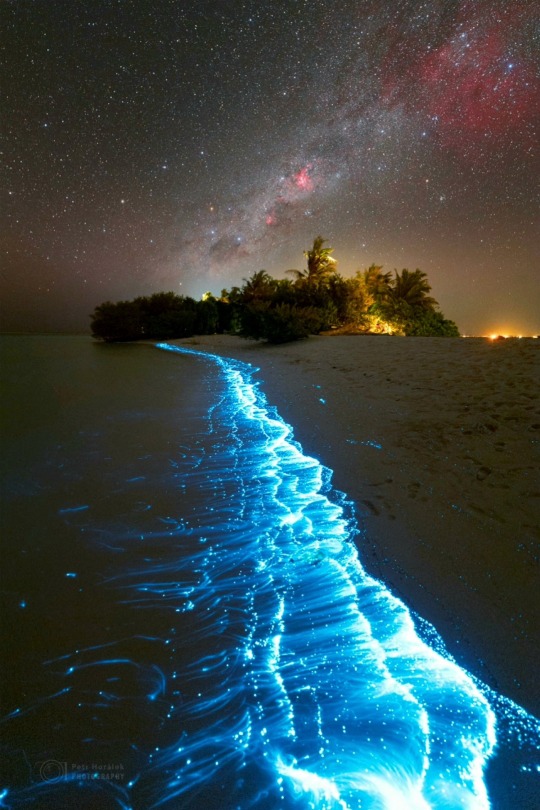
What glows there? The answer depends: sea or sky? In the sea, the unusual blue glow is bioluminescence. Specifically, the glimmer arises from Noctiluca scintillans, single-celled plankton stimulated by the lapping waves. The plankton use their glow to startle and illuminate predators. This mid-February display on an island in the Maldives was so intense that the astrophotographer described it as a turquoise wonderland. In the sky, by contrast, are the more familiar glows of stars and nebulas. The white band rising from the artificially-illuminated green plants is created by billions of stars in the central disk of our Milky Way Galaxy. Also visible in the sky is the star cluster Omega Centauri, toward the left, and the famous Southern Cross asterism in the center. Red-glowing nebulas include the bright Carina Nebula, just right of center, and the expansive Gum Nebula on the upper right.
Image Credit & Copyright: Petr Horálek / Institute of Physics in Opava, Sovena Jani
#2023#your friendly neighborhood space nerd#galaxy#bioluminescence#southern cross#constellations#carina nebula#nebula#Noctiluca scintillans#maldives#omega centauri#gum nebula#science#beautiful#amazing images#astrophotography
2 notes
·
View notes
Text
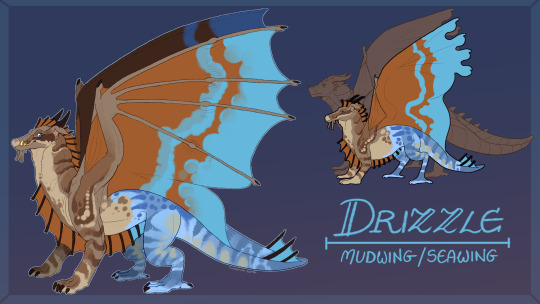
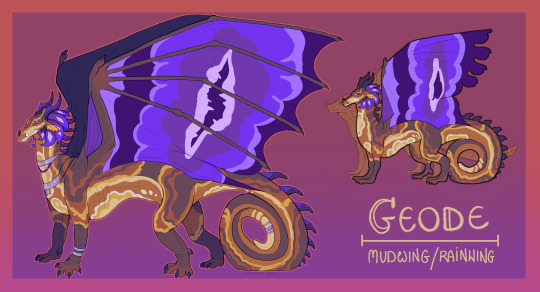

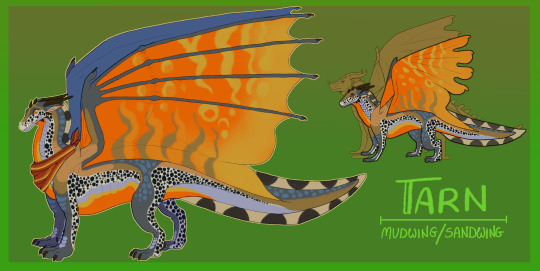
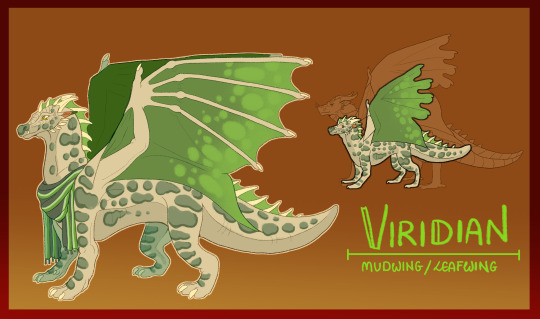
Got inspired by a bunch of amphibians on a lecture and I finally came up with the designs for the rest of Goldstone and Amethyst's siblings + an ancient Seawing cryptid that can turn ocean water into blood or something.
Icons and creatures they're based on:




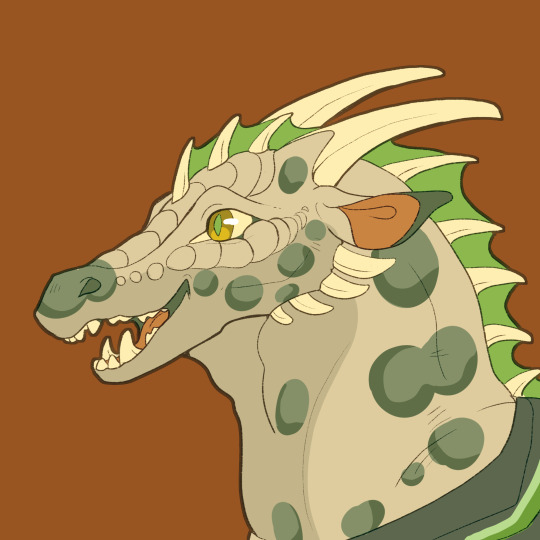
Drizzle - moorfrog (she's a blend between female and breeding season male colors btw)
Noctiluca - Noctiluca scintillans, a protist that can make water glow but also they're the causes of toxic algae blooms than can turn water red
Viridian - european green toad
Tarn - alpine newt
#overcomplicated designs but I like them and I have no self control#each time I try to stop myself from making more wof designs for myself#cause I see super cool animals you can base them off of#but this time I had to do it#also Amethyst is the only full mudwing in her sibling group#they just put all the eggs under miscellanous together and they formed a hatch group#and for half of their lives they all though they were just funky colored mudwings#Goldstone never actually found out she was a nightwing until she was full-grown and met actual nighwings#but they still love each other and are siblings!#wof#wings of fire#wof oc#mudwing#seawing#leafwing#nighwing#sandwing#rainwing#cinnamon's doodles
78 notes
·
View notes
Photo
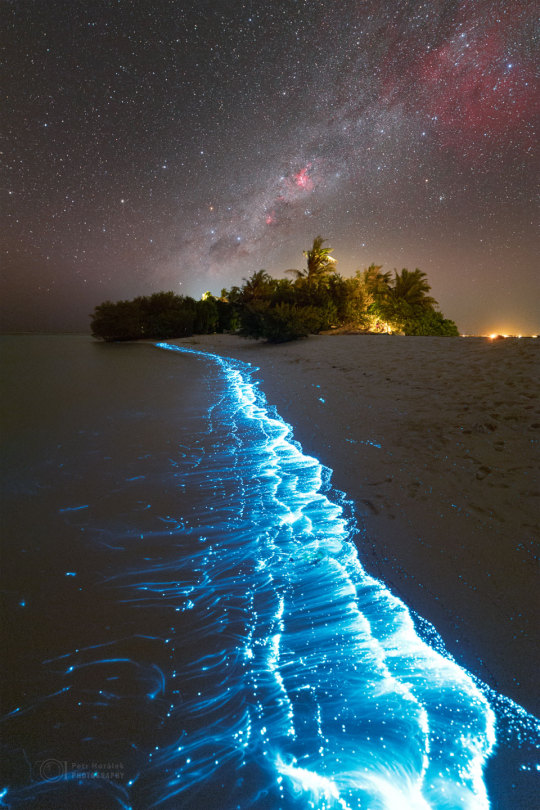
2023 May 29
Milky Way over a Turquoise Wonderland
Image Credit & Copyright: Petr Horálek / Institute of Physics in Opava, Sovena Jani
Explanation: What glows there? The answer depends: sea or sky? In the sea, the unusual blue glow is bioluminescence. Specifically, the glimmer arises from Noctiluca scintillans, single-celled plankton stimulated by the lapping waves. The plankton use their glow to startle and illuminate predators. This mid-February display on an island in the Maldives was so intense that the astrophotographer described it as a turquoise wonderland. In the sky, by contrast, are the more familiar glows of stars and nebulas. The white band rising from the artificially-illuminated green plants is created by billions of stars in the central disk of our Milky Way Galaxy. Also visible in the sky is the star cluster Omega Centauri, toward the left, and the famous Southern Cross asterism in the center. Red-glowing nebulas include the bright Carina Nebula, just right of center, and the expansive Gum Nebula on the upper right.
∞ Source: apod.nasa.gov/apod/ap230529.html
307 notes
·
View notes
Text
What glows there? The answer depends: sea or sky? In the sea, the unusual blue glow is bioluminescence. Specifically, the glimmer arises from Noctiluca scintillans, single-celled plankton stimulated by the lapping waves.
The plankton use their glow to startle and illuminate predators. This mid-February display on an island in the Maldives was so intense that the astrophotographer described it as a turquoise wonderland.
In the sky, by contrast, are the more familiar glows of stars and nebulas. The white band rising from the artificially-illuminated green plants is created by billions of stars in the central disk of our Milky Way Galaxy.
Also visible in the sky is the star cluster Omega Centauri, toward the left, and the famous Southern Cross asterism in the center.
Red-glowing nebulas include the bright Carina Nebula, just right of center, and the expansive Gum Nebula on the upper right.
📷: Petr Horálek / Institute of Physics in Opava, Sovena Jani
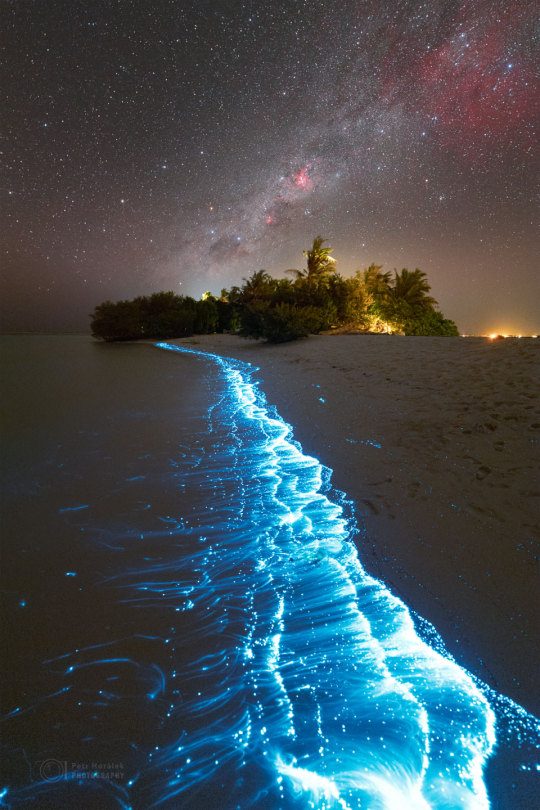
#astronomy#astrophotography#milky way#beautiful photos#beautiful earth#amazing beauty#beautiful#coastlife#space advances#science acumen#nebula#stars#solar system#nasa#astrophysics#physics
203 notes
·
View notes
Text
Chemical Secret behind "Blue Tears"
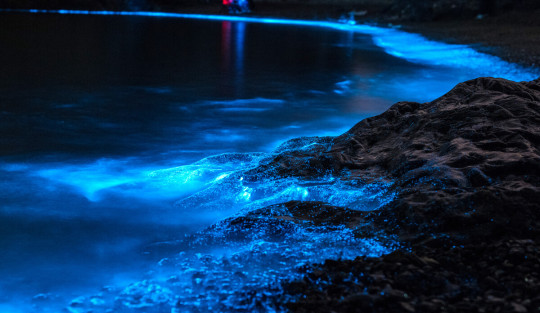
Have you ever witnessed the mesmerizing 'Blue Tears' phenomenon?
On the ocean's surface, a dreamy blue glow emerges at night. It's caused by marine microorganisms like dinoflagellates and Cypridina, reacting to the stimulation of waves with their fluorescent compounds.
Often referred to as the 'Sea Sparkle,' 'Sea Ghost,' or 'Fire of the Sea,' Noctiluca scintillans, a spherical non-parasitic microorganism in marine environments, is renowned for its bioluminescence. It turns the water into a vibrant blue spectacle after dark. Meanwhile, Dinoflagellate luciferin, found in dinoflagellates, serves as a biological light source for these organisms.

#blue tears#chemistry#science#organicchemistry#molecule#compound#chemblr#stem studyblr#stemblr#amazing facts#glorious#incredible
36 notes
·
View notes
Photo

FROM : charlesdclimer - Bioluminescent noctiluca scintillans, algae known otherwise as sea sparkle - Australia - by Joanne Paquette
32 notes
·
View notes
Photo
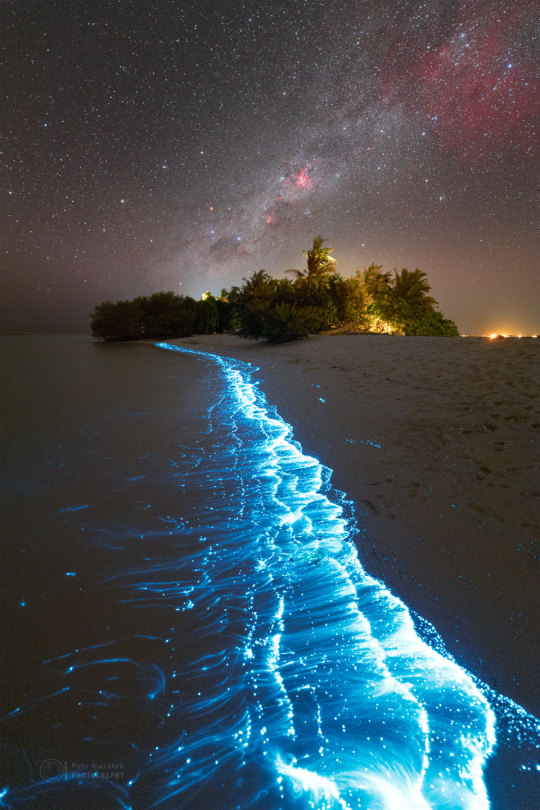
via NASA https://ift.tt/M4OwEK6
What glows there? The answer depends: sea or sky? In the sea, the unusual blue glow is bioluminescence. Specifically, the glimmer arises from Noctiluca scintillans, single-celled plankton stimulated by the lapping waves. The plankton use their glow to startle and illuminate predators. This mid-February display on an island in the Maldives was so intense that the astrophotographer described it as a turquoise wonderland. In the sky, by contrast, are the more familiar glows of stars and nebulas. The white band rising from the artificially-illuminated green plants is created by billions of stars in the central disk of our Milky Way Galaxy. Also visible in the sky is the star cluster Omega Centauri, toward the left, and the famous Southern Cross asterism in the center. Red-glowing nebulas include the bright Carina Nebula, just right of center, and the expansive Gum Nebula on the upper right.
24 notes
·
View notes
Text

Revenge against @ivynnnn!!
I based them off of dinoflagellates, therefore the name Dinoflood (feel free to change it, it is very silly).
Inspired by noctiluca scintillans, which bioluminesce and are responsible for the sea sparkle phenomenon- and they can also cause red tides so yippee!!
I hope you enjoy them!!! I tried to play around with the colors!!
9 notes
·
View notes
Note
Good luck finding a good lake to wallow in. It really is good for the soul.
Favorite lake? Good at swimming?
Gippsland Lakes.
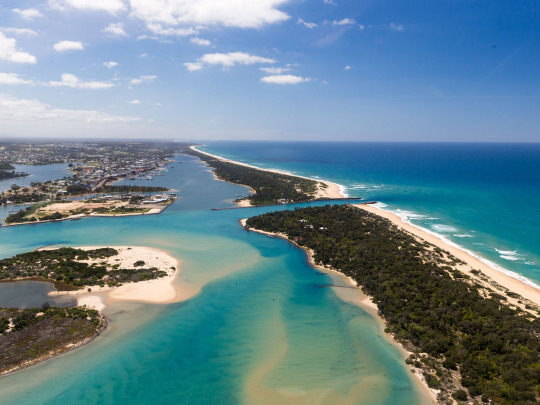
Saltwater, technically not actually a lake (though there are saltwater lakes there!) but more a series of marshes. Rarely you can see aurorae over the ocean from the beaches, but that's not why I love the area.
This is.

Every few years, if you're very lucky, they become bioluminescent because of blooms of the dinoflaggellate Noctiluca scintillans. And let me tell you, sitting on a glowing beach and watching the aurora makes you feel like you're not on Earth anymore.
Second-favourite lake? The one closest to Dad's place, Lake Berryessa. That's where I'm going today (except I'll be on the backroads in a creek and not at the lake itself because ew, people).

Third-favourite lake? Lake Almanor up in Chester. That's my favourite town in California up in Plumas County. Amazing little place, super close to Lassen Volcanic National Park. Stop by the coffee shop and get a chocolate muffin because they're to die for.
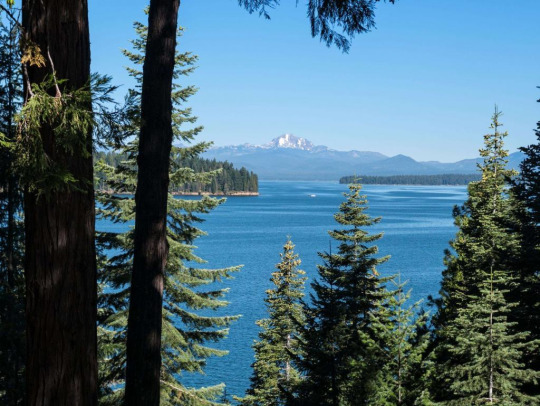
And I'm an incredible swimmer! I've been swimming all my life and I love doing it. I swim, I dive, I've been spearfishing, I've never been surfing but I want to. :]
6 notes
·
View notes
Text

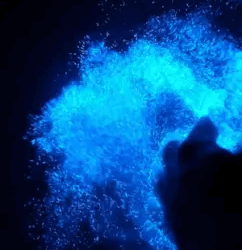

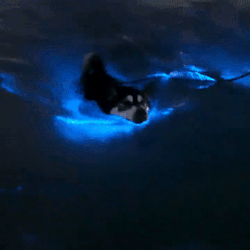

Noctiluca scintillans
9 notes
·
View notes
Text
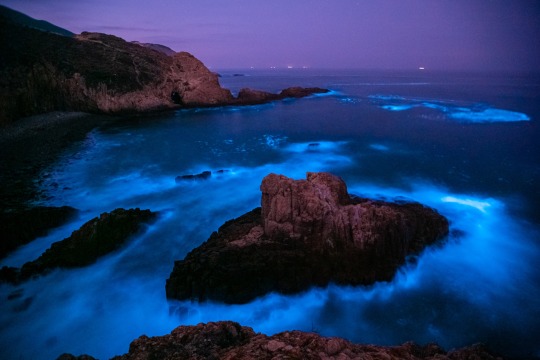
Noctiluca Scintillans 🌊
•
📸 Callery
📍 Pak Lap, Hong Kong
🗓 2022. 03. 12
•
Social:
IG. FB. Twitter. Flickr. Tumblr. Pinterest: CalleryPhoto
— — — — — — — — — — — — — — — — — — —
— — — — — — — — — — — — — — — — — — —
• Panasonic LUMIX S1 @lumix
• Canon EF 16-35mm f/2.8L II USM
• SIGMA Mount Converter MC-21 ( EF - L )
• iFootage Gazelle FastBowl TC7 Tripod
• Leofoto G4 Geared Head
— — — — — — — — — — — — — — — — — — —
— — — — — — — — — — — — — — — — — — —
2 notes
·
View notes
Photo

Noctiluca in the North Sea? Swirls and tendrils of color start to decorate the shallow waters of the North Sea in the spring and summer. Just as increasing sunlight and warmth triggers buds and blooms on land, it can also fuel blooms of the “grass of the sea”—phytoplankton. On June 14, 2023, the Operational Land Imager-2 (OLI) on Landsat 9 acquired this natural-color image of a bloom north of the East Frisian Islands in Lower Saxony, Germany. The bloom became visible in natural-color MODIS imagery in late May and drifted in the area through mid-June. The grids of dots within and just east of the phytoplankton are turbines that are part of an offshore wind farm. Phytoplankton are tiny, plant-like organisms that often float near the ocean surface and turn sunlight and carbon dioxide into sugars and oxygen. In turn, they become food for the grazing zooplankton, shellfish, and finfish of the sea. The also play an important but not fully understood role in the global carbon cycle, taking carbon dioxide out of the atmosphere and sinking it to the bottom of the ocean. Phytoplankton are most abundant in the North Sea in late spring and early summer due to high levels of nutrients in the water. Melting sea ice and increased runoff from European rivers—a product of melting snow and spring rains—carry a heavy load of nutrients out to sea, while also freshening the surface waters. Intense seasonal winds blowing over the relatively shallow sea also cause a lot of mixing that brings nutrients to the surface. Without a physical sample, it’s not possible to say for sure which type of phytoplankton are present in these images. However, the appearance of the blooms is similar to those created by Noctiluca scintillans—a type of marine dinoflagellate known to live in this area in the summer. Though Noctiluca scintillans blooms can glow at night in beautiful ways, their presence can also soak up oxygen from the water and cause hypoxia and dead zones. NASA’s future Plankton, Aerosol, Cloud, ocean Ecosystem (PACE) satellite mission will allow researchers to infer more information about the oceans, such as the concentration and size of particles and dissolved organic materials, the diversity of phytoplankton, and rates of phytoplankton growth. NASA Earth Observatory image by Wanmei Liang, using Landsat data from the U.S. Geological Survey. Story by Adam Voiland.
1 note
·
View note
Text

APOD: Milky Way over a Turquoise Wonderland (5/29/23)
What glows there? The answer depends: sea or sky? In the sea, the unusual blue glow is bioluminescence. Specifically, the glimmer arises from Noctiluca scintillans, single-celled plankton stimulated by the lapping waves. The plankton use their glow to startle and illuminate predators. This mid-February display on an island in the Maldives was so intense that the astrophotographer described it as a turquoise wonderland. In the sky, by contrast, are the more familiar glows of stars and nebulas. The white band rising from the artificially-illuminated green plants is created by billions of stars in the central disk of our Milky Way Galaxy. Also visible in the sky is the star cluster Omega Centauri, toward the left, and the famous Southern Cross asterism in the center. Red-glowing nebulas include the bright Carina Nebula, just right of center, and the expansive Gum Nebula on the upper right.
© Petr HorálekInstitute of Physics in Opava
0 notes
Text
Fioriture letali nel Golfo di Mannar
23 settembre 2022.
11 ottobre 2022.
Negli ultimi quattro anni, l’acqua del Golfo di Mannar si è colorata di verde brillante nei mesi di settembre e ottobre per l’aumento della popolazione di un fitoplancton unicellulare chiamato Noctiluca scintillans. Queste grandi fioriture di dinoflagellati marini brillano di una spettacolare tonalità di blu di notte, ma la loro presenza può avere conseguenze…

View On WordPress
0 notes
Text
we also tried to go watch the noctiluca scintillans (help? thats the latin term apparently i couldnt find the english one) but it was too bright cause the moon was fucking crazy tonight and sooooo bright. i could tell there was a lot though.
1 note
·
View note
